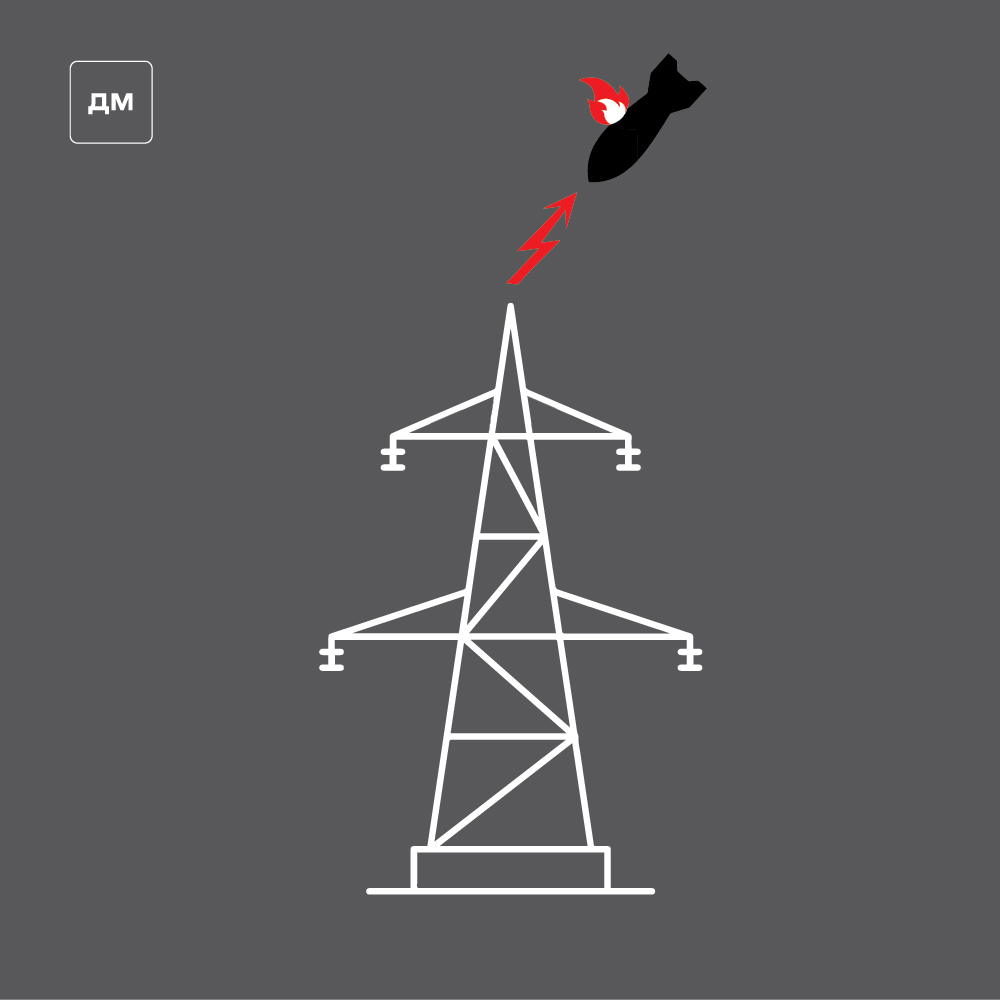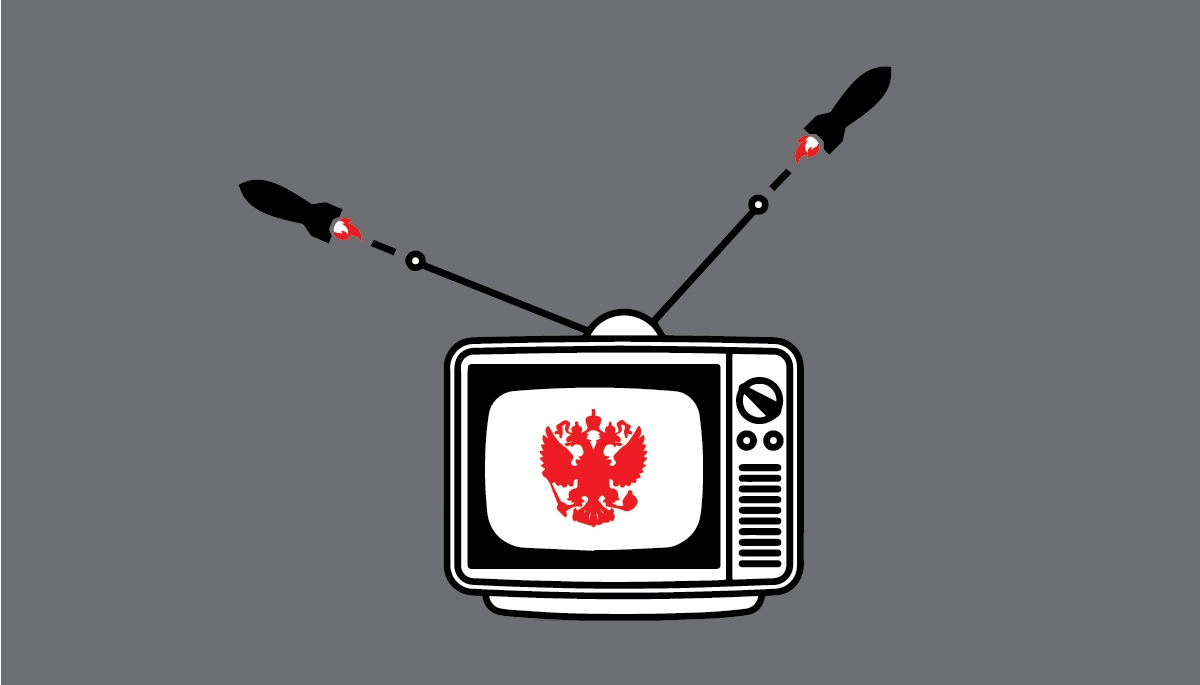During the week, fakes and manipulations of Russian propaganda about the war in Ukraine concerned Russian missile attacks, the work of Ukrainian air defense, and the behavior of the Ukrainian military in the liberated territories.
Українською текст читайте тут.
Since February 24, Detector Media has been monitoring Ukrainian social media and documenting the chronicle of Russian disinformation surrounding its military offensive in Ukraine. During the week of October 10-17, 2022, Detector Media analysts recorded more than four dozen disinformation cases spread by Russian propagandists to achieve Russia’s political goals. In particular, during this week, many fakes and narratives of Russian propaganda concerned the massive missile attacks that Russia carried out on Monday, October 10. Ukrainians were threatened with “living conditions as in the Middle Ages”, “an offensive from Belarus”, food scarcity, and a repeated Russian offensive. During the week, Kremlin propagandists managed not only to scare Ukrainians with the brutality of the Ukrainian troops in the liberated territories but also to accuse Ukrainians of impudence.
You can find our overviews of Russian disinformation for the previous weeks here: September 26 – October 2; October 3 – 9.
The Belarus offensive, cover-up of shelling damage, and the President’s escape
This week, the Detector Media team recorded the most information injections on Monday, October 10, the day of the massive missile attacks. In particular, Telegram channels controlled by Russian special services claimed that the Office of the President and the heads of regions urged Ukrainians not to publish photos of the destruction caused by missile attacks, and the SBU allegedly wrote to administrators of social media groups demanding to stop posting such photos. The propagandists claimed that this requirement is aimed at stopping the spread of panic, because “if there are no photos and videos, then there are no strikes and losses”. That is, the propagandists stated that the Ukrainian authorities were lying to Ukrainians and trying to hide the true extent of the events. “The authorities are lying, and the missiles keep flying,” they wrote. We have analyzed in detail why it is prohibited to publish photos and videos of the consequences of missile strikes, as such content can help the enemy. Information about missile strikes, as well as photos and videos of events that the military consider safe to publish, gradually appear on the Internet and on the official pages of government officials. In particular, there are such photos and videos on the website of President Volodymyr Zelenskyy. However, the Russians spread these claims to convince Ukrainians that the government is deceiving them, and instead of solving the problem, simply ignoring it and pretending that nothing is happening. Such messages are aimed at discrediting Ukrainian leadership.
On the same day, when Russian missiles were raining down from the sky, destroying Ukrainian infrastructure, propagandists were spreading information that the situation on the frontline is deteriorating for Ukraine and that an offensive from the territory of Belarus is imminent. Ukrainian authorities and the army leadership refuted the information about the offensive from Belarus and the advance of Russian troops along the frontline, as there was no evidence that Russia was planning to organize a new offensive from the territory of Belarus, despite the statements of the Belarusian leader Alexander Lukashenko about the creation of a joint military unit with Russia.

Also that day, propagandists reported explosions in areas where none had occurred. Overall, the Russians tried to create an image of an impending Apocalypse that day: they wrote that Kyiv stores were running out of food, although people weren’t even going there because there was a long air raid alarm and a tangible airborne threat; they claimed that all embassies of all countries were urgently leaving Ukraine and even the Red Cross stopped its activities for security reasons, and therefore, we should expect trouble. They also tried to further obscure the situation by spreading fakes that Russian missiles hit the “decision-making center” – the buildings of the Verkhovna Rada and the SBU, and Zelenskyy fled the country. The information, or, rather, the disinformation picture of that day was somewhat reminiscent of what happened in the information space in the first days of the big war: the same fakes about the government abandoning Ukrainians scares of attacks from multiple directions, etc.
The next day after the missile attacks on Kyiv and other cities, propagandists spread fakes about the explosion at the Crimean bridge once again, as if to imply that the attacks were in retaliation for Ukraine’s part in the explosion. Russian media reported, for example, that the perpetrator of the Crimean bridge attack had been identified. Allegedly, he was Ukrainian, as evidenced by his passport. But the photo of the “terrorist’s” passport turned out to be an edited picture showing a sample passport of a Ukrainian citizen (an ID card) taken from Wikipedia. The authors of the fake only changed the name, photo, and gender, and all other “document details” remained the same as on Wikipedia. Also, using a photo editor, they added alleged blood stains or signs of damage “as a result of a terrorist attack”. However, the face on the “passport” belongs to an American comedian and prankster Sam Hyde.
Regions of low importance and bad volunteers
Adding to the chaos, Kremlin propagandists speculated on the performance of air defense systems, claiming that Ukrainian authorities discriminate between worse and better regions, i.e. those requiring more protection and, respectively, less. Allegedly, the day before, air defense systems were diverted from the Ivano-Frankivsk and Lviv regions, leaving these territories inadequately protected against missile strikes, and now these systems were being “urgently” returned. On the other hand, according to these reports, Kyiv and Dnipro were “excessively” protected because they are “more strategically important” to the government. The same speculations have been recorded in the local Telegram channels of Mykolaiv, Odesa, Kharkiv, and other regions. Propagandists deliberately disseminated these narratives as “insights” or “hearsay” after shelling.
The same day, narratives were circulated online designed to discredit Ukrainian volunteers raising funds for army supplies. First, such narratives appeared on anonymous Telegram channels as a reaction to the announcement of a joint fundraiser by Serhiy Prytula and Serhiy Sternenko, which was also joined by other volunteer initiatives. The propagandists claimed that the volunteers were allegedly using the attack on Ukraine to get more money for themselves or for what the West already provides to Ukraine for free. In fact, according to Serhiy Prytula, Ukrainian volunteers preemptively announced a fundraiser for RAM II loitering munitions that they had scheduled for October 12. In his post, Prytula also argued the need to purchase these weapons for the Ukrainian army. During the massive Russian missile attack, as of the morning of October 11, Ukrainians have raised more than 276 million hryvnias. However, Russian propaganda systematically tries to discredit the work of volunteers who help the army. Since then, according to the thorough Telegram monitoring conducted by the Detector Media team on a weekly basis, anonymous pro-Russian Telegram channels continued to ridicule the work of Ukrainian volunteers, accused them of fraud, etc.
There were also online stories this week about Ukrainians allegedly supporting Russians. Stories of purported “Kyiv residents” told to propagandists were published with the hashtag “Russian whisper”. In particular, there was the story of a certain Olya, who allegedly sits in Kyiv without electricity and writes to Russian propagandists that “not everyone has gone insane here”, that she is “very much waiting for the Russians” and couldn’t talk about it, otherwise she would not live to see “your victory”. With the help of so-called “eyewitness testimonies”, propagandists promote messages about “Ukrainian Nazism” and “discrimination against Russian speakers” and create the illusion that the Ukrainians are expecting the Russian army “as heroes and liberators”.
There is a civil war in Ukraine, and Musk refused to pay for Starlink because Ukrainians insulted him
In addition, propaganda once again promoted the idea that Ukraine is in the grip of a civil war. The state agency RIA Novosti published a column by propagandist Petr Akopov “A New Stage of the Dismantling of Ukraine Has Begun”. Its author, a recurring propagandist for several Russian media outlets, calls on the Russian authorities to arrange missile strikes until the entire civilian infrastructure of Ukraine is destroyed, not stopping at the destruction already caused “in full awareness of its detrimental effects on the civilian population”. The author calls the war a “civil war” or “a war waged by two states of one people”. He also argues that Russia cannot allow “generations of southern Russians to be brought up to reject their own Russianness”.
Russian propagandists also claimed that because of the policy of the President’s Office, Ukrainians will be shunned “like the plague”, because allegedly they act as if everyone owes them something. This narrative was circulated in the wake of news that Elon Musk may stop financing Starlink services in Ukraine. The reports said that this may happen due to Musk being offended by the words of Ukrainian Ambassador Andriy Melnyk, who advised him to “f*ck off”. CNN reports, however, that a letter to the Pentagon about the refusal to finance Starlink was sent as early as September. That is, long before the appearance of Musk’s proposals for a “peace plan” for the Russian-Ukrainian war, which he published on Twitter on October 3, and, accordingly, the harsh reaction of Ukrainians to his advice. By the way, soon after, Musk announced that he would continue to provide assistance to Ukraine.

In addition to this, propaganda reports this week claimed that the Ukrainian military had been ordered to kill all inhabitants of occupied territories during the counter-offensive. Ukrainians were allegedly ordered to throw grenades into basements and shelters where people were hiding. Russian propagandists have repeatedly accused the Ukrainian army of crimes against civilians in territories liberated from Russia. The propagandists used similar tactics when the Russian troops retreated from Bucha in the Kyiv Region and from Izium in the Kharkiv Region, for example. Following the liberation of the cities, mass graves were found filled with people who had been tortured by the Russians. The propagandists, however, are proactive in shifting the responsibility for Russian war crimes to Ukrainians.



